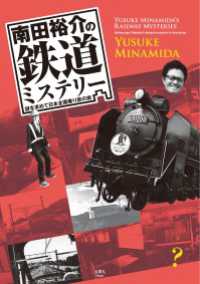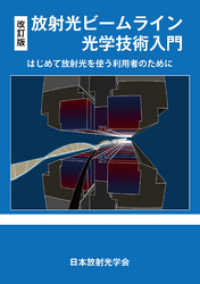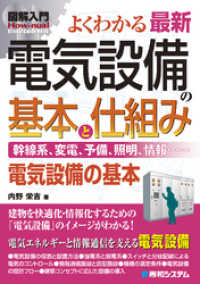- ホーム
- > 洋書
- > 英文書
- > Literary Criticism
Full Description
What was "information" in the early eighteenth century, and what influence did the emergence of information, as potential physical and psychological threat, have on readers of the period? Recent scholarship in eighteenth-century print culture and in twenty-first-century media studies and theory offers a unique opportunity to reconsider how and why information is figuratively imagined during the eighteenth century as an abstract yet bodily entity that can flood, suffocate, and incapacitate readers. Focusing on 1678 to 1722 -- a period that experienced impressive innovations in communication -- this study reveals that the term "information" undergoes a significant transformation with social, cultural, and literary consequences. By investigating discussions of information and media that are evident in works by literary authors, the author finds that writers like John Bunyan, Aphra Behn, Jonathan Swift, and Daniel Defoe confront the idea of information overload and provide case studies in literacy reform that operate on institutional, generic, and consumer levels. For example, while in Defoe's Journal of the Plague Year information is infectious and citizens depend upon comets and phantoms to construct reader-controlled, decentralized media, in Swift's Tale of a Tub commonplace books and collections demonstrate a new type of organizational, or secretarial, impulse in society.
Contents
Introduction: Reading Information and Media in Seventeenth- and Eighteenth-Century Literature Chapter 1: Away with your Book: Imagined Communities and the Administration of Secrecy through Print and Post in Bunyan's Pilgrim's Progress Chapter 2: Inform me, oh! Inform me: Public News Events and the Cruel Disease of Information in Aphra Behn's The History of the Nun: or, The Fair Vow-Breaker Chapter 3: Bring Your Own Guts to a Reasonable Compass: Swift's Material Poiesis of Information in A Tale of a Tub Chapter 4: If the Arrow Flies Unseen: Secrecy and the Documentation of Disaster in Defoe's The Journal of the Plague Year Chapter 5: Freezing Machines and Storehouses: Media of Preservation in James Boswell's London Journals and Hypochondriack Essays Notes Works Cited








